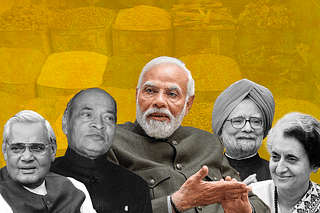Infrastructure
How Modi Sarkar’s UDAY Scheme Has Improved Discoms’ Efficiency In Its ‘Power For All’ Objective
Harrshit Varma
Mar 24, 2018, 11:41 AM | Updated 11:40 AM IST
Save & read from anywhere!
Bookmark stories for easy access on any device or the Swarajya app.
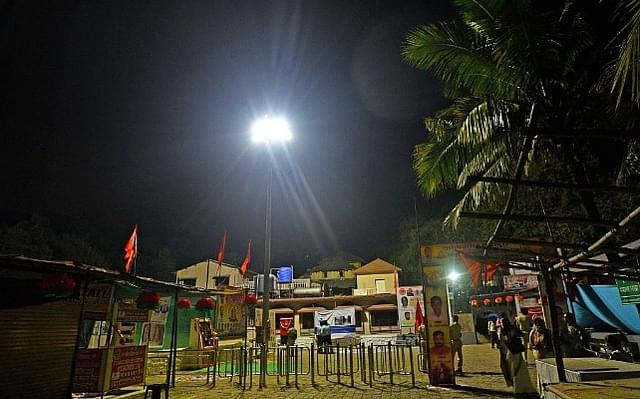
In November 2015, amid much fanfare, the then Union power minister Piyush Goyal launched the Ujwal DISCOM Assurance Yojana or UDAY, as the central government set itself on the path of ridding state electricity distribution companies (DISCOMs) of the monumental debts they had accumulated through years of mismanagement.
As of September that year, the total accumulated debt of the loss-making state DISCOMs stood at a massive $74 billion or Rs 4.8 trillion, with the companies borrowing heavily from banks at exorbitant interest rates to keep going.
The scheme initiated by the central government envisioned four steps to be taken to help the state utilities start breaking even in a span of two to three years.
1. Improving operational efficiencies of DISCOMs
2. Reduction of cost of power
3. Reduction in interest cost of DISCOMs
4. Enforcing financial discipline on DISCOMs through alignment with state finances
Years of mismanagement had left the DISCOMs grappling with high interest rates of up to 14-15 per cent on their accumulated debts, leading to a reduced power purchasing capacity for the DISCOMs even as the country had begun generating more power than was the demand. Raising power tariffs was not an option for the DISCOMs due to political reasons in most of the states.
Consumers thus had to face black-outs not because the country couldn’t produce enough power but because the DISCOMs couldn’t buy the electricity produced due to legacy issues that ailed them.
As part of the scheme, when a DISCOM would opt into it, the respective state government was expected to take over 75 per cent of the debt through two years, reducing the interest rate charged on the loan between 8 per cent and 9 per cent from the earlier 14-15 per cent. The governments can then issue ‘UDAY’ bonds to raise the money to be paid to the banks.
As of now, 27 states and five union territories have opted into the scheme with some state DISCOMs yet to begin implementation of the scheme.
Data has been collected from the central government’s UDAY portal.
Here we take a look at the status of bonds issued by the states under the scheme as part of debt restructuring.
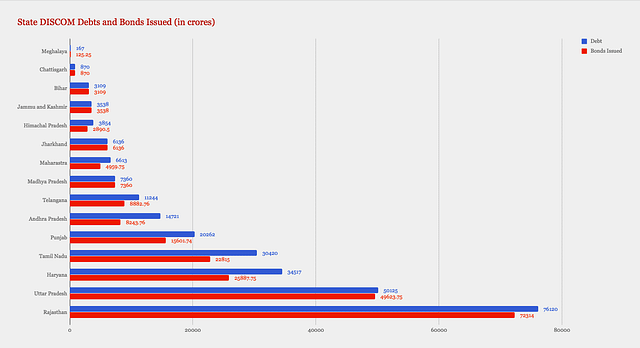
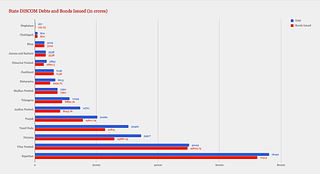
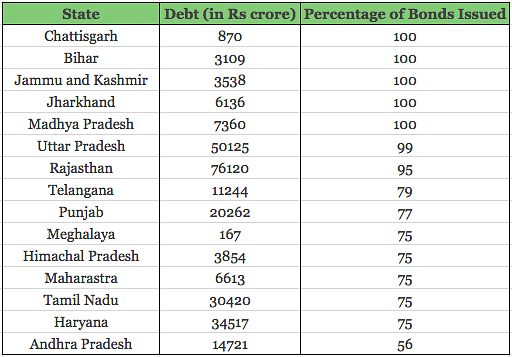
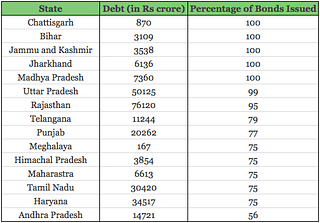
Most states have issued more than 75 per cent of the DISCOM debts as bonds, with the national average registering 85 per cent. While Andhra Pradesh has lagged in this regard, at 56 per cent, Chhattisgarh, Uttar Pradesh, Madhya Pradesh, Jammu and Kashmir, Jharkhand, and Bihar have achieved 100 per cent restructuring of DISCOM debts under the scheme.
Now we look at the aggregated technical and commercial (AT&C) losses for the states that have signed up for UDAY. These losses comprise the revenue lost due to transmission inefficiencies and losses due to factors like theft and metering issues. Even as the global average is less than 9 per cent, Indian DISCOMs have faced very high AT&C losses of up to 26 per cent over the years.
Following the implementation of UDAY, the national average now stands at 21.36 per cent for the participating states. The distribution for the states is:
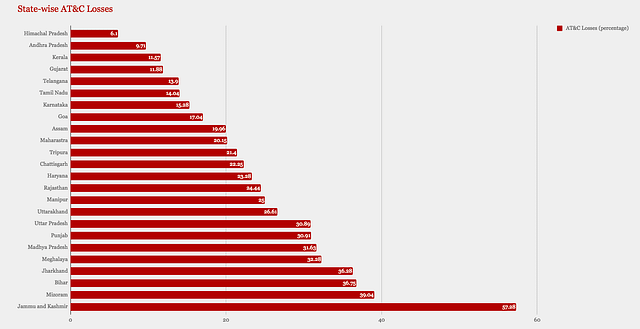
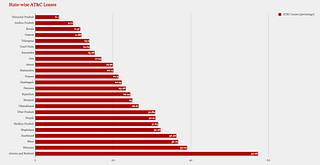
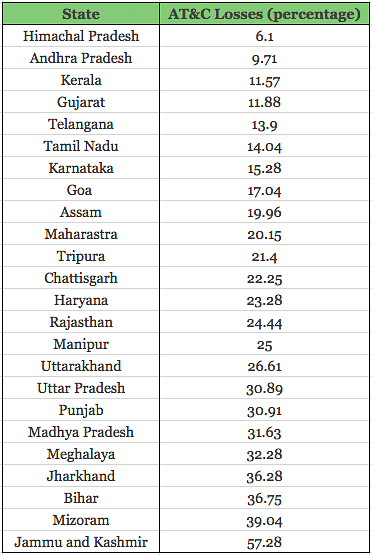
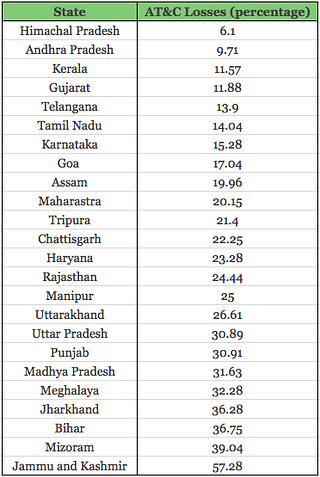
The AT&C losses for the participatory DISCOMs have progressively fallen from 23.84 per cent in 2016, and the government is aiming for the losses to be cut down to 15 per cent till the scheme ends in 2019. Himachal and Andhra Pradesh lead here.
Now we look at the ARR-ACS Gap or the difference between average revenue realisation (ARR) and actual cost of supply (ACS), which essentially represents the loss per unit (kWh) for the DISCOMs. It includes the combined effect of savings in interest cost, power purchase cost, tariff rationalisation, better billing, and collection efficiency.
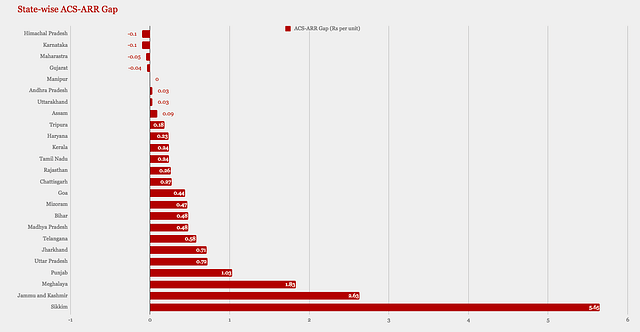
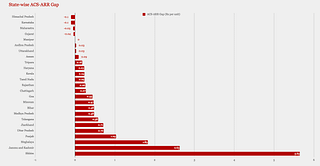
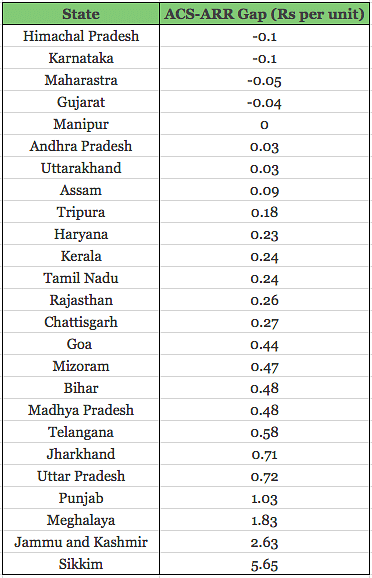
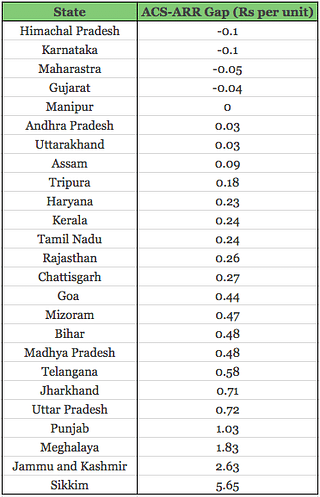
While the national average still stands at 32 paise per unit, it is much better than the 59 paise per unit it was in fiscal year 2016. For some states, the number is in the negative, which is a positive development. This represents a significant improvement in operational efficiency of the DISCOMs. So UDAY’s results are clearly visible in this metric.
As the DISCOMs become more efficient, it will show in the tariffs they charge the customers. Thus far, 25 of the 27 participating states have issued a tariff revision for customers, which is a welcome step towards the ‘affordable power for all’ objective of the central government.
However, the scheme has also faced some criticism with warnings that entering into the scheme might negatively affect the ability of states to raise funds due to increased liabilities. However, debt-laden DISCOMs have saved more than Rs 15,000 crore till March 2017 by participating in UDAY, as losses were down from Rs 51,590 crore in 2015-16 to Rs 39,000 crore in 2016-17.
While the current data seems to suggest that UDAY is actually helping the DISCOMs emerge from the financial ruin they were in earlier, whether the scheme can permanently fix the power distribution infrastructure in the country remains to be seen. If it does, it will be an enduring legacy of the Modi government.
Save & read from anywhere!
Bookmark stories for easy access on any device or the Swarajya app.
Harrshit is a senior sub-editor at Swarajya.
Introducing ElectionsHQ + 50 Ground Reports Project
The 2024 elections might seem easy to guess, but there are some important questions that shouldn't be missed.
Do freebies still sway voters? Do people prioritise infrastructure when voting? How will Punjab vote?
The answers to these questions provide great insights into where we, as a country, are headed in the years to come.
Swarajya is starting a project with an aim to do 50 solid ground stories and a smart commentary service on WhatsApp, a one-of-a-kind. We'd love your support during this election season.
Click below to contribute.


